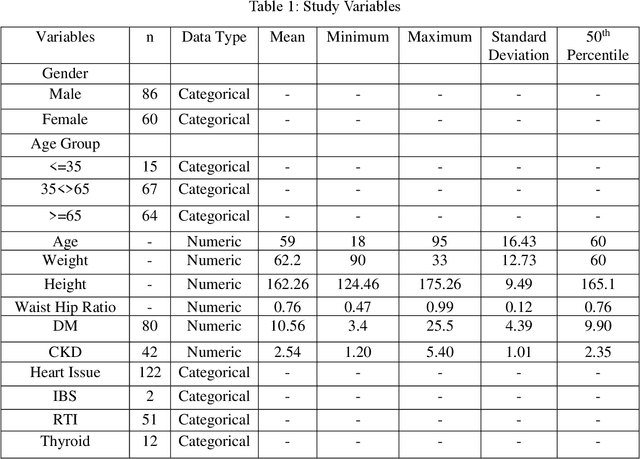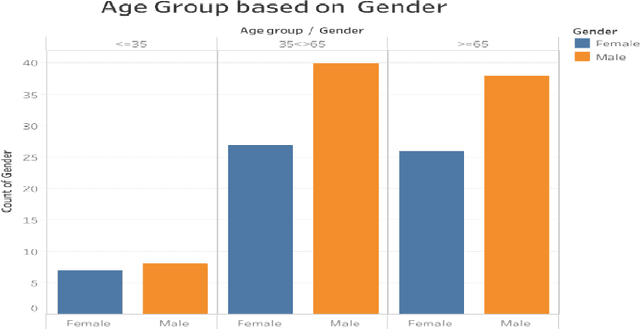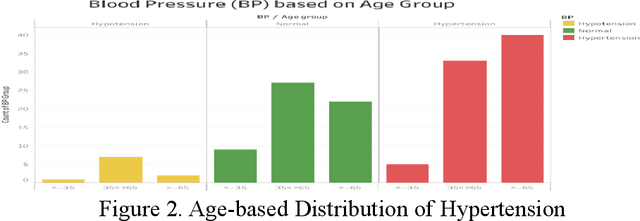Srabonti Das
OBESEYE: Interpretable Diet Recommender for Obesity Management using Machine Learning and Explainable AI
Aug 05, 2023Abstract:Obesity, the leading cause of many non-communicable diseases, occurs mainly for eating more than our body requirements and lack of proper activity. So, being healthy requires heathy diet plans, especially for patients with comorbidities. But it is difficult to figure out the exact quantity of each nutrient because nutrients requirement varies based on physical and disease conditions. In our study we proposed a novel machine learning based system to predict the amount of nutrients one individual requires for being healthy. We applied different machine learning algorithms: linear regression, support vector machine (SVM), decision tree, random forest, XGBoost, LightGBM on fluid and 3 other major micronutrients: carbohydrate, protein, fat consumption prediction. We achieved high accuracy with low root mean square error (RMSE) by using linear regression in fluid prediction, random forest in carbohydrate prediction and LightGBM in protein and fat prediction. We believe our diet recommender system, OBESEYE, is the only of its kind which recommends diet with the consideration of comorbidities and physical conditions and promote encouragement to get rid of obesity.
Prevalence and major risk factors of non-communicable diseases: A Hospital-based Cross-Sectional Study in Dhaka, Bangladesh
Mar 03, 2023



Abstract:Objective: The study aimed to determine the prevalence of several non-communicable diseases (NCD) and analyze risk factors among adult patients seeking nutritional guidance in Dhaka, Bangladesh. Result: Our study observed the relationships between gender, age groups, obesity, and NCDs (DM, CKD, IBS, CVD, CRD, thyroid). The most frequently reported NCD was cardiovascular issues (CVD), which was present in 83.56% of all participants. CVD was more common in male participants. Consequently, male participants had a higher blood pressure distribution than females. Diabetes mellitus (DM), on the other hand, did not have a gender-based inclination. Both CVD and DM had an age-based progression. Our study showed that chronic respiratory illness was more frequent in middle-aged participants than in younger or elderly individuals. Based on the data, every one in five hospitalized patients was obese. We analyzed the co-morbidities and found that 31.5% of the population has only one NCD, 30.1% has two NCDs, and 38.3% has more than two NCDs. Besides, 86.25% of all diabetic patients had cardiovascular issues. All thyroid patients in our study had CVD. Using a t-test, we found a relationship between CKD and thyroid (p-value 0.061). Males under 35 years have a statistically significant relationship between thyroid and chronic respiratory diseases (p-value 0.018). We also found an association between DM and CKD among patients over 65 (p-value 0.038). Moreover, there has been a statistically significant relationship between CKD and Thyroid (P < 0.05) for those below 35 and 35-65. We used a two-way ANOVA test to find the statistically significant interaction of heart issues and chronic respiratory illness, in combination with diabetes. The combination of DM and RTI also affected CKD in male patients over 65 years old.
 Add to Chrome
Add to Chrome Add to Firefox
Add to Firefox Add to Edge
Add to Edge